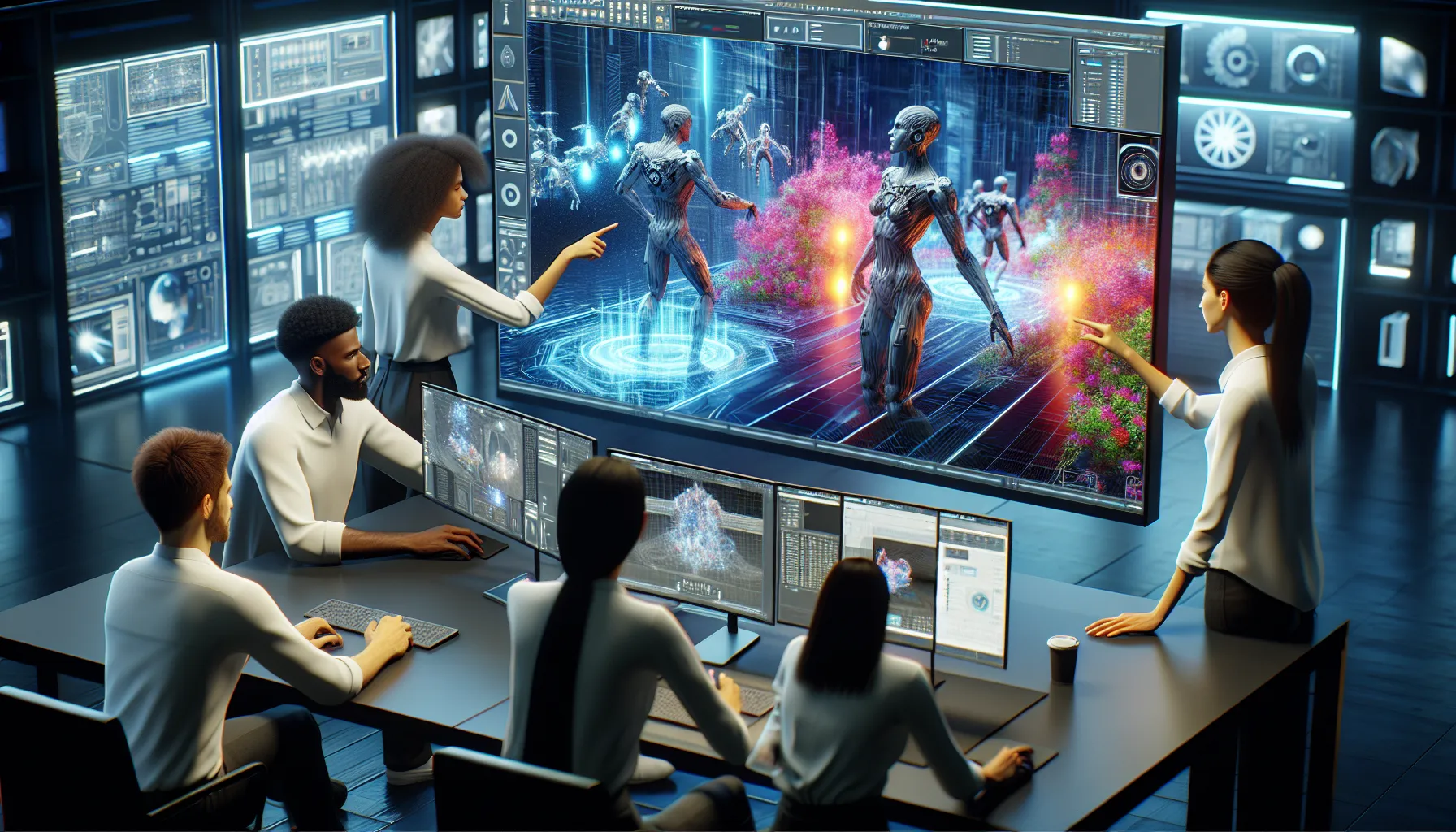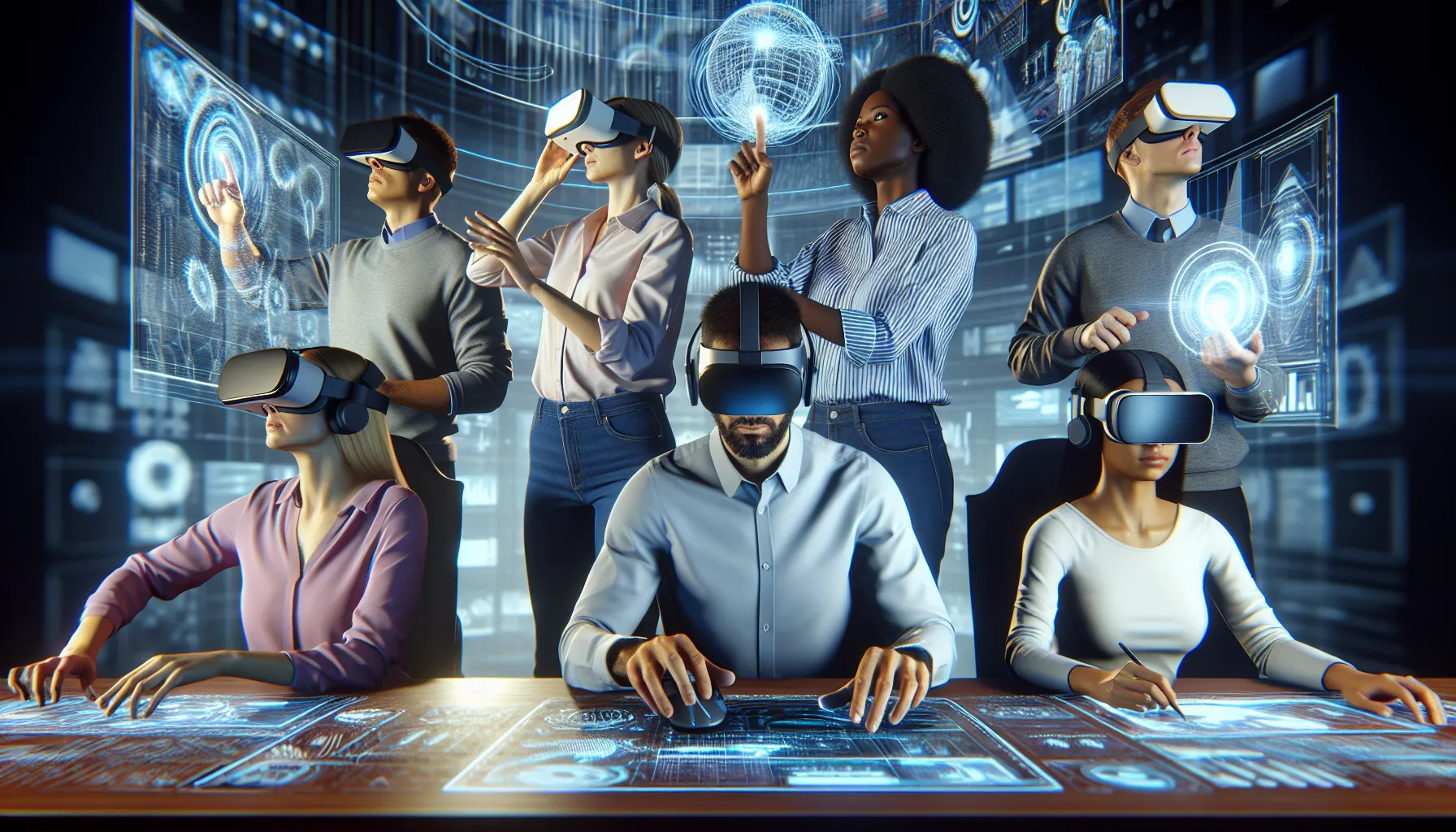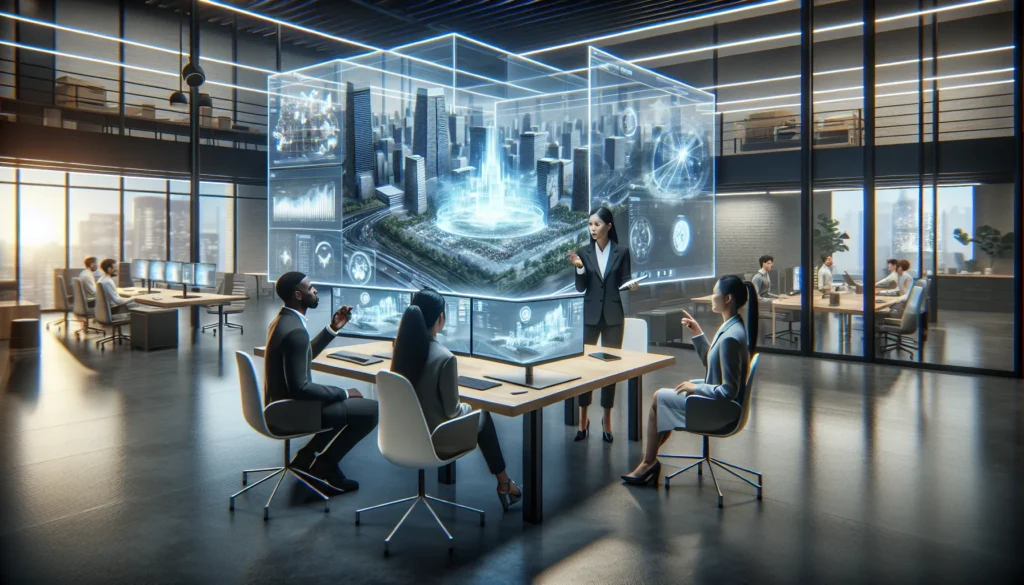The digital world is evolving faster than ever, introducing concepts like the metaverse and omniverse that promise to reshape how you interact with technology. While these terms might sound similar, they represent distinct ideas that could redefine virtual experiences, collaboration, and creativity. Understanding their differences is key to navigating this new frontier.
You’ve probably heard of the metaverse as a shared virtual space where people connect, work, and play. But the omniverse takes things a step further, offering a platform for seamless collaboration across digital environments. Whether you’re a tech enthusiast or just curious, knowing how these two concepts diverge will help you grasp their potential impact on your daily life and the future of innovation.
What Is The Metaverse?
The metaverse is a shared, persistent virtual space that combines augmented reality (AR), virtual reality (VR), and digital interactions. It allows users to connect, interact, and create experiences in immersive digital environments.
Key Features Of The Metaverse
- Immersive Environments: The metaverse integrates AR and VR to create realistic digital worlds. Examples include 3D virtual spaces and interactive simulations.
- User-Centric Design: Personal avatars and digital identities enhance customization and self-expression.
- Decentralization: Blockchain technology ensures ownership of digital assets such as NFTs and virtual property.
- Interconnectivity: Multiple platforms and applications merge into a single, shared digital ecosystem.
Applications Of The Metaverse
- Entertainment: Gaming platforms like Roblox and Fortnite offer immersive experiences, including concerts and social meetups.
- Education: Virtual classrooms enable real-time interaction for distance learning.
- Retail: Brands like Nike and Gucci create virtual stores for product exploration and purchasing.
- Workspaces: Virtual offices enable remote collaboration using tools like Horizon Workrooms.
What Is The Omniverse?

The omniverse is a comprehensive platform that enables real-time collaboration and simulation across interconnected digital ecosystems. It serves as a hub where virtual worlds, 3D tools, and simulations converge, allowing seamless integration of diverse digital assets for collaborative innovation.
Key Features Of The Omniverse
- Real-Time Collaboration: Teams can work on the same 3D environment simultaneously across different locations, ensuring synchronization without delays. For example, designers, engineers, and developers can contribute collaboratively to a single project.
- Interoperability: The omniverse supports multiple 3D tools and file formats using open standards like Universal Scene Description (USD). This integration enables smooth workflows between software solutions such as Autodesk, Blender, and Unreal Engine.
- Advanced Simulations: It provides realistic physics simulations for virtual environments, supporting precision-based industries like automotive and engineering.
- AI Integration: AI-powered tools enhance the efficiency of workflows, offering automation for repetitive tasks, realistic character animations, and environmental optimizations.
- Scalability: Capabilities expand from individual projects to enterprise-level solutions, accommodating small teams and multinational corporations alike.
Applications Of The Omniverse
- Architecture and Engineering: Create detailed architectural simulations, develop infrastructure models, and test designs in lifelike virtual spaces before physical implementation.
- Gaming Development: Enhance game creation with real-time collaboration, advanced visual effects, and simulation-based testing for virtual environments.
- Manufacturing: Optimize factory layouts and simulate production processes to improve efficiency and predict potential issues.
- Entertainment Industry: Used for virtual movie sets, visual effects, and animated productions by allowing seamless collaboration among teams.
- Training and Simulation: Deliver realistic training modules for industries like healthcare, aviation, and emergency response by simulating complex scenarios in controlled virtual environments.
Core Differences Between Metaverse And Omniverse

The metaverse and omniverse cater to distinct objectives, leveraging different technologies and finding varied use across industries. Understanding their core differences helps clarify their unique roles in shaping digital experiences.
Purpose And Usage
The metaverse focuses on creating immersive, user-driven experiences in shared virtual spaces. It allows individuals to socialize, play, work, and trade digital assets in environments built around VR and AR. For example, users participate in virtual concerts, interactive education, and digital marketplaces.
The omniverse, on the other hand, emphasizes collaborative functionality for professionals and industries needing real-time simulations and integration. It connects digital tools, 3D software, and data pipelines to create synchronized workflows. For instance, architects design structures collaboratively, while manufacturers simulate workflows to optimize production lines.
Technology And Architecture
The metaverse operates on decentralized technologies like blockchain and NFTs to provide ownership, interoperability, and persistent environments. Its architecture integrates AR, VR, IoT, and cloud computing to facilitate a fluid, user-centric virtual experience.
The omniverse relies on centralized platforms designed to integrate multiple digital ecosystems. It uses AI, machine learning, and advanced simulations to enable precise modeling and real-time collaboration. Platforms like NVIDIA Omniverse employ scalable frameworks supporting varied spatial computing tools for professional use.
Industry Adoption
The metaverse sees widespread adoption in consumer-focused industries like gaming, retail, and entertainment. Companies leverage virtual spaces for marketing campaigns, concerts, and e-commerce ventures, targeting immersive engagement with end users.
The omniverse finds prominence in industrial and professional sectors, such as automotive, engineering, and media production. Businesses integrate omniverse technologies for product design, digital twin creation, and simulation-based workflows to enhance efficiency and reduce errors.
Similarities Between Metaverse And Omniverse

Both the metaverse and omniverse leverage advanced digital technologies to create interconnected virtual environments. These platforms provide immersive 3D experiences, allowing users to interact within digital spaces.
- Virtual Environments
Both concepts revolve around creating interactive and immersive virtual environments. While the metaverse is user-focused with activities like gaming and socializing, the omniverse integrates these environments for collaborative tasks.
- Interconnectivity
Each system emphasizes interconnectivity between multiple platforms. The metaverse links virtual worlds for seamless interactions, and the omniverse connects digital ecosystems for efficient workflows.
- Augmented and Virtual Reality
AR and VR technologies play a vital role in both. The metaverse employs them for creating enhanced, engaging experiences, while the omniverse uses them to simulate and collaborate in real time.
- Digital Asset Integration
Both facilitate the use of digital assets. The metaverse focuses on decentralized systems like NFTs, and the omniverse supports asset sharing across platforms for development and simulations.
- Innovation in Industries
Both extend their impact to various industries. The metaverse revolutionizes entertainment, gaming, and retail, while the omniverse transforms manufacturing, engineering, and training simulations.
By offering interconnected environments with real-time interaction, both platforms align toward advancing digital transformation.
Why Understanding The Difference Is Important
Grasping the distinction between the metaverse and omniverse equips you with the knowledge to make informed decisions in technology adoption and innovation. These platforms, while interconnected, serve unique purposes across industries, influencing how businesses, developers, and users interact with digital ecosystems.
- Strategic Integration
The metaverse and omniverse cater to different objectives. Recognizing their roles helps you strategically integrate these technologies into relevant projects. For example, the metaverse enhances customer engagement in retail, while the omniverse streamlines simulation workflows in engineering.
- Effective Resource Allocation
Understanding the specific use cases ensures resources like time, finances, and workforce are allocated efficiently. Companies developing social experiences benefit from investing in metaverse capabilities, while those needing real-time simulations gain from adopting omniverse tools.
- Industry-Specific Applications
Industries achieve more through tailored implementation. The metaverse drives entertainment and education innovation, whereas the omniverse supports architecture and manufacturing by enabling precision and collaboration.
- Technological Advancements
Differentiating these platforms keeps you updated on emerging technologies. For instance, knowing the metaverse relies on blockchain facilitates exploring decentralized ecosystems, while omniverse users benefit from tackling interoperability challenges in 3D environments.
- Future-Ready Solutions
By understanding these distinctions, your strategies align with future market demands. Whether creating decentralized immersive experiences or advancing collaborative simulations, this insight enables adaptability as digital landscapes evolve.
Conclusion
Understanding the metaverse and omniverse is crucial as you navigate the ever-evolving digital landscape. Each concept offers unique opportunities, whether you’re focusing on immersive user experiences or advanced collaborative tools. By recognizing their distinct roles, you can make informed decisions that align with your goals and industry needs.
As these technologies continue to shape the future, staying informed empowers you to leverage their potential effectively. Whether you’re exploring decentralized virtual spaces or integrating real-time simulations, the key lies in adapting to the possibilities they bring.
Frequently Asked Questions
What is the metaverse?
The metaverse is a persistent, shared virtual space that combines augmented reality (AR), virtual reality (VR), and digital interactions. It allows users to socialize, play, and create immersive experiences. Key features include customizable avatars, decentralization through blockchain, and interconnectivity among various platforms.
What is the omniverse?
The omniverse is a comprehensive platform that supports real-time collaboration and simulation across interconnected digital environments. It integrates tools, simulations, and assets, enabling professionals to work together seamlessly. It’s often used in industries like architecture, engineering, and gaming development.
How is the metaverse different from the omniverse?
The metaverse focuses on user-driven experiences like gaming, socializing, and trading digital assets. The omniverse, on the other hand, emphasizes professional collaboration through real-time simulations and integration, often in technical fields like engineering.
What technologies power the metaverse?
The metaverse is powered by technologies like AR, VR, blockchain, and NFTs. These enable immersive experiences, ownership of digital assets, and decentralized interactions across platforms.
What industries benefit from the metaverse?
Industries like gaming, retail, entertainment, education, and remote workspaces benefit from the metaverse, as it provides immersive and engaging virtual experiences.
What technologies support the omniverse?
The omniverse uses AI, real-time simulation tools, 3D modeling software, and scalable centralized platforms to allow collaboration and innovation across industries.
Which industries use the omniverse?
The omniverse is widely used in fields like architecture, engineering, gaming development, manufacturing, and entertainment for workflows that require precision and real-time collaboration.
Can the metaverse and omniverse coexist?
Yes, the metaverse and omniverse can coexist. While the metaverse focuses on enhancing consumer experiences, the omniverse supports professional collaboration, with both contributing to interconnected digital advancements.
Are the metaverse and omniverse decentralized?
The metaverse primarily operates on decentralized technologies like blockchain and NFTs, while the omniverse uses centralized platforms for seamless asset integration and collaboration.
Why is it important to understand the differences between the metaverse and omniverse?
Understanding the differences helps businesses and professionals make informed decisions about adopting the right technology for their goals, whether it’s creating immersive user experiences or streamlining industrial workflows.

